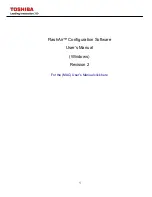
Developing Compaq COBOL Programs
1.2 Developing Programs on Tru64 UNIX
The object file is in Tru64 UNIX extended
coff
format. The object file provides
the following information:
•
The name of the entry point. It takes this name from the program name in
the first PROGRAM-ID paragraph in the source program.
•
A list of variables that are declared in the module. The linker uses this
information when it binds two or more modules together and must resolve
references to the same names in the modules.
•
A symbol table and a source line correlation table (if you request them
with the
-g
flag, for debugging). A symbol table is a list of the names of all
external and internal variables within a module, with definitions of their
locations. The source line correlation table associates lines in your source file
with lines in your program. These tables are of use in debugging.
If severe errors are encountered during compilation or if you specify certain flags
such as
-c
, linking does not occur.
1.2.2.8 Naming Output Files
To specify a file name (other than
a.out
) for the executable image file, use the
-o
output flag, where output specifies the file name. You can also use the
mv
command to rename the file. The following command requests a file name of
prog1.out
for the source file
test1.cob
:
% cobol -o prog1.out test1.cob
Besides specifying the name of the executable image file, you can use the
-o
output flag to rename the object file if you specified the
-c
flag. If you specify the
-c
flag and omit the
-o
output flag, the name of the first specified file is used with
a
.o
suffix substituted for the source file suffix.
1.2.2.9 Temporary Files
Temporary files created by the compiler or a preprocessor reside in the
/tmp
directory and are deleted (unless the
-K
flag is specified). You can set the
environment variable TMPDIR to specify a directory to contain temporary files if
/tmp
is not acceptable.
To view the file name and directory where each temporary file is created, use
the
-v
flag. To create object files in your current working directory, use the
-c
flag. Any object files (
.o
files) that you specify on the
cobol
command line are
retained.
1.2.2.10 Examples of the COBOL Command
The following examples show the use of the
cobol
command. Each command is
followed by a description of the output files that it produces.
1.
% cobol -V aaa.cob bbb.cob ccc.cob
The Compaq COBOL source files
aaa.cob
,
bbb.cob
, and
ccc.cob
are compiled
into temporary object files. The temporary object files are passed to the
ld
linker. The
ld
linker produces the executable file
a.out
. The
-V
flag causes
the compiler to create the listing files
aaa.lis
,
bbb.lis
, and
ccc.lis
.
Developing Compaq COBOL Programs 1–17
Содержание COBOL AAQ2G1FTK
Страница 22: ......
Страница 30: ......
Страница 94: ......
Страница 110: ......
Страница 146: ......
Страница 180: ......
Страница 194: ...Processing Files and Records 6 1 Defi...
Страница 300: ......
Страница 490: ......
Страница 516: ......
Страница 517: ......
Страница 530: ......
Страница 534: ......
Страница 590: ......
Страница 620: ......
















































